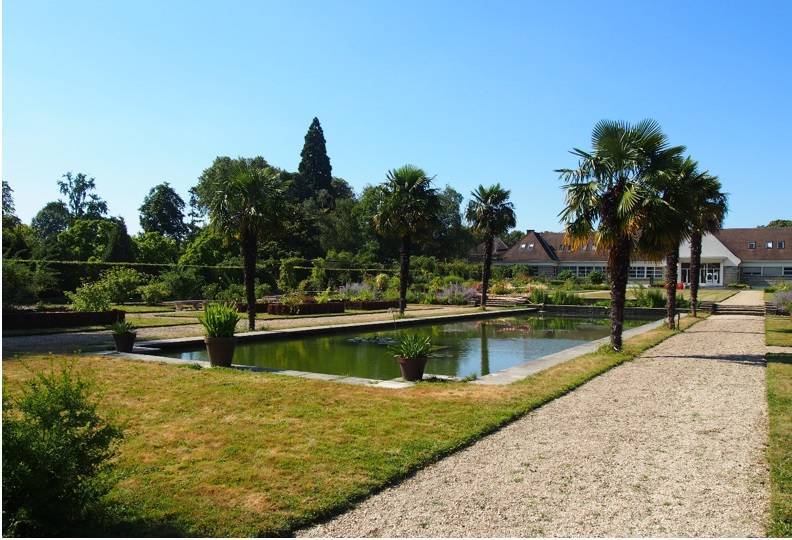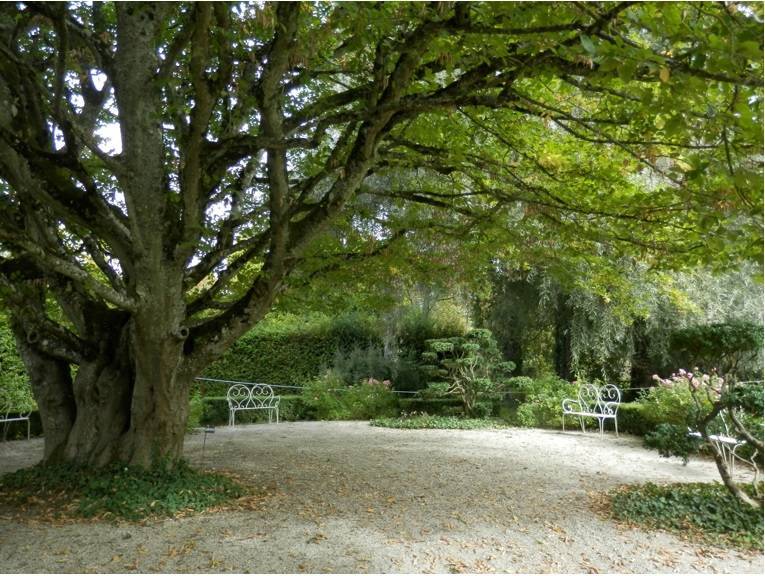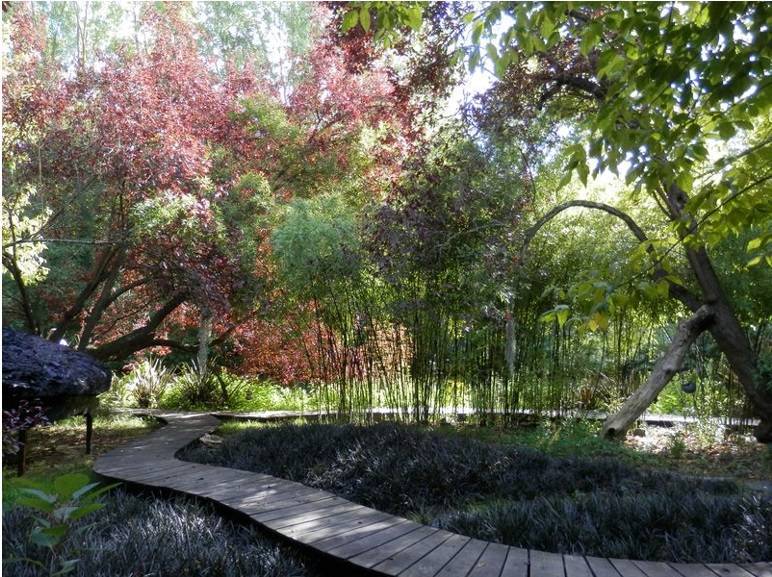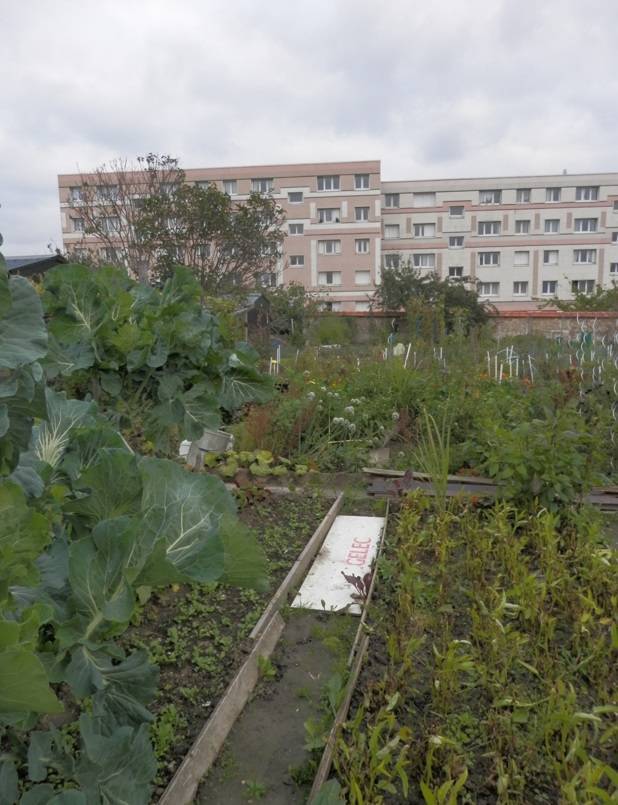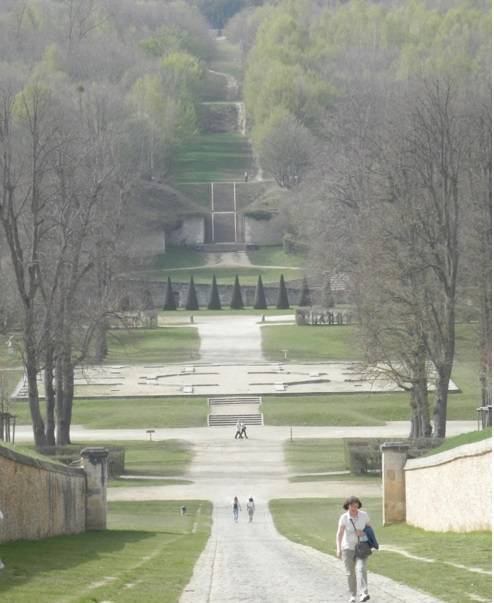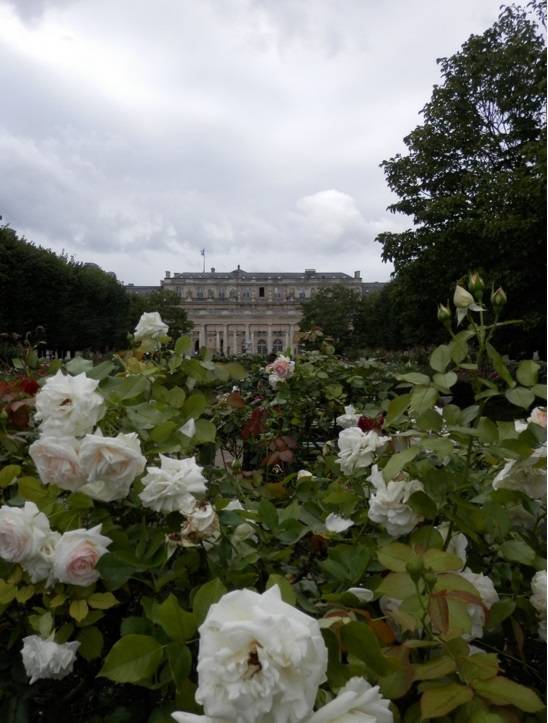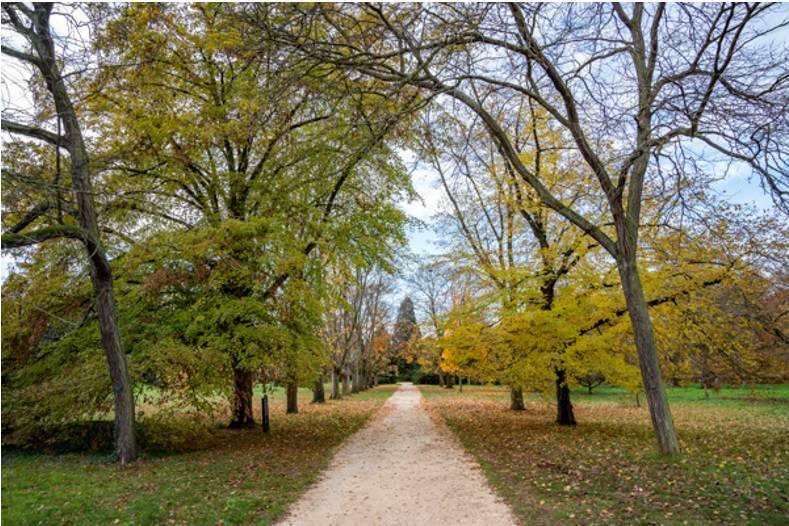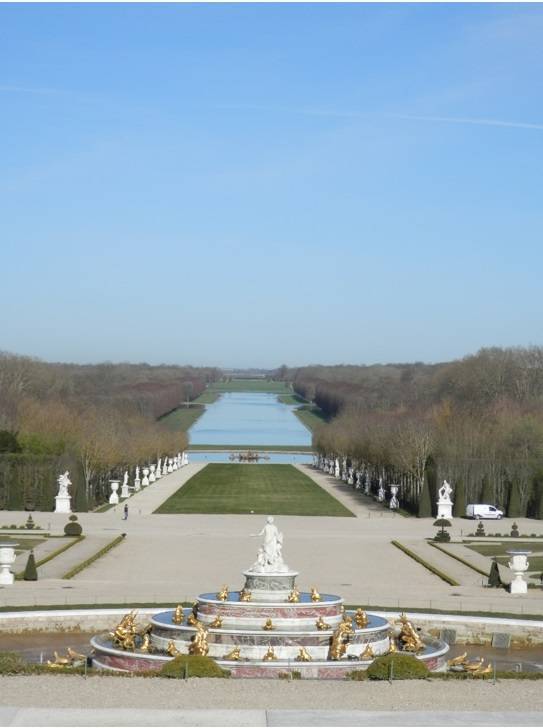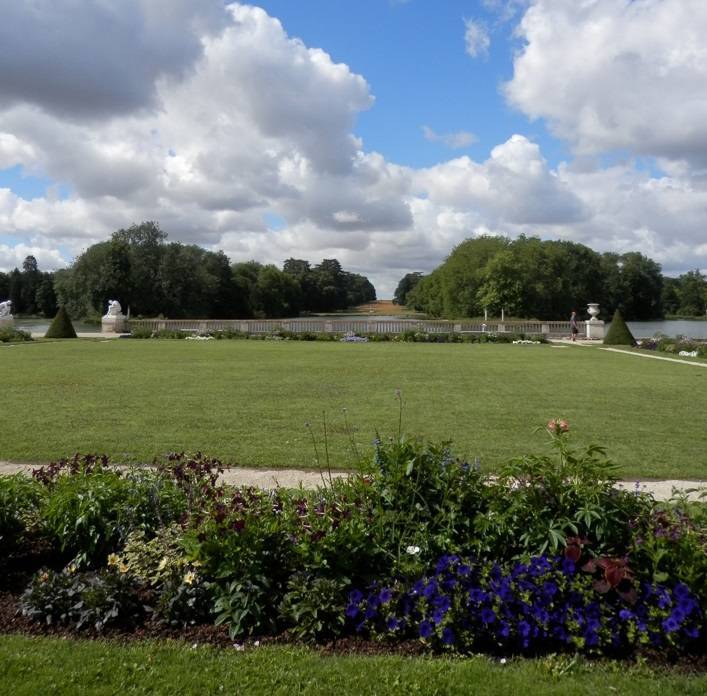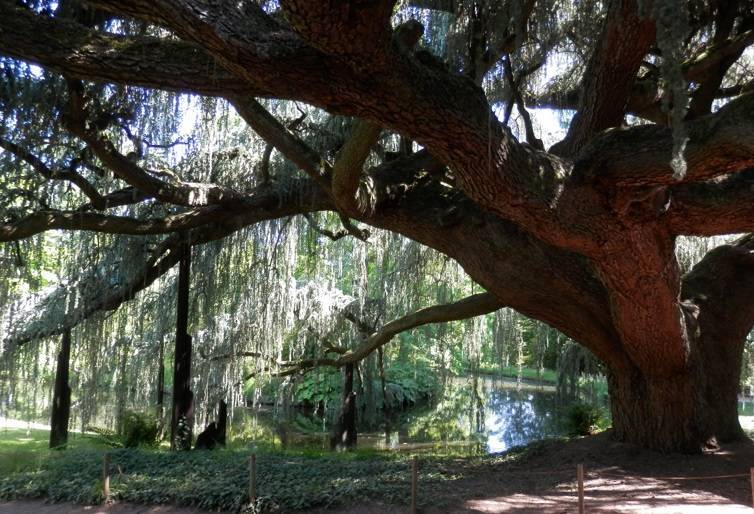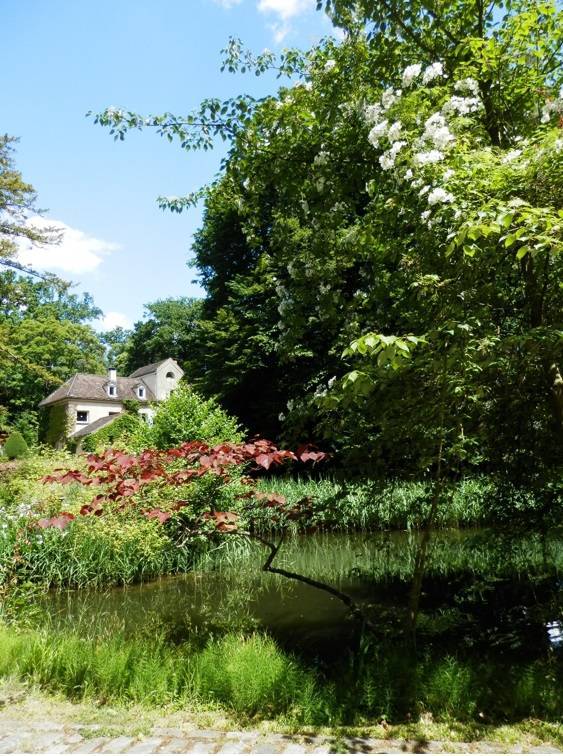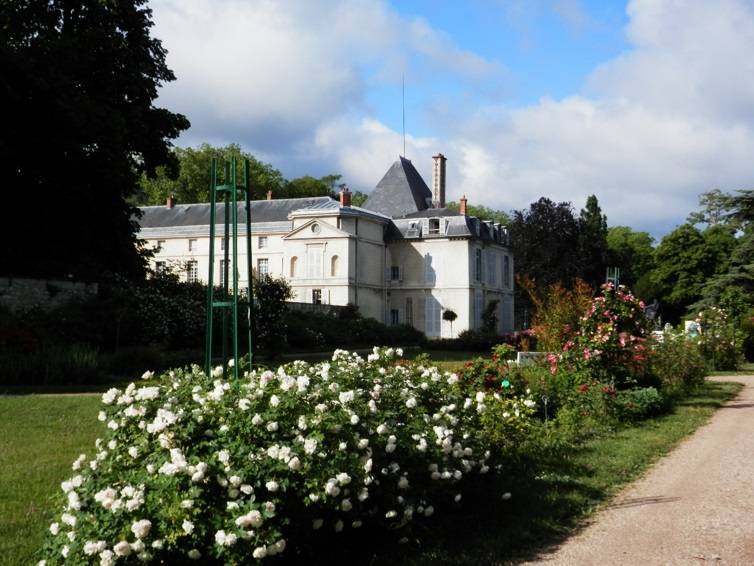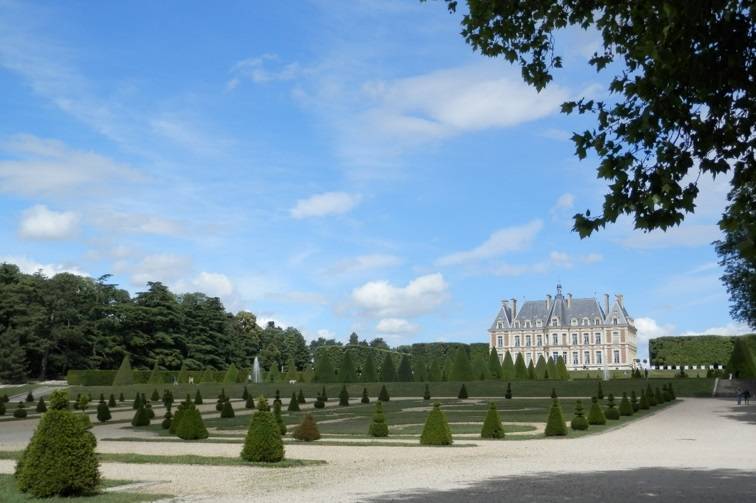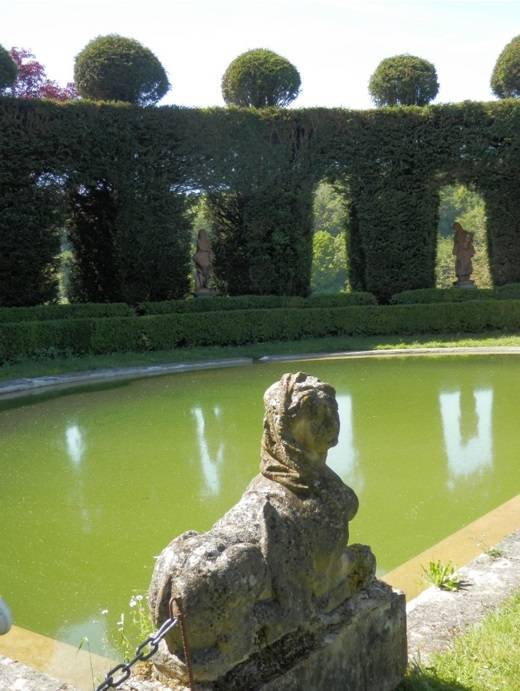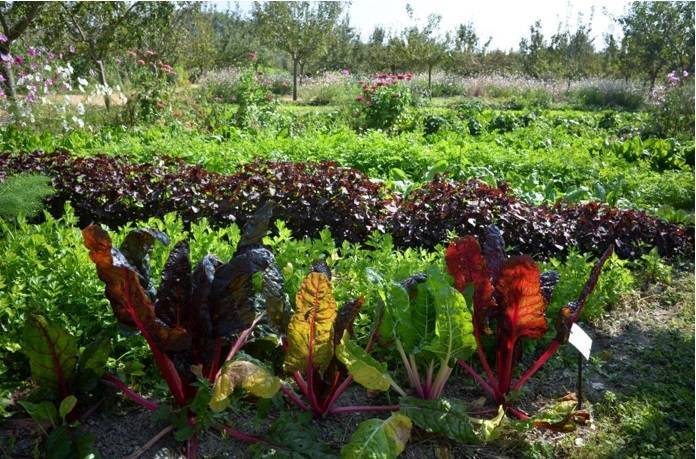The years 2021 and 2022 gave rise to the five-year review of the Remarkable Gardens labeled in 2005 on the Ile-de-France territory. 4 renewals in 2021 and 9 renewals in 2022. During the same period, two exceptional gardens - the greenhouses of Auteuil (Paris 16th arr.) and the national domain of Marly (Marly-le-Roi, Yvelines) - were distinguished by a first labellisation.
The label Jaremarkable rdin is issued, since 2004, by the Ministry of Culture to gardens open to the public representing a cultural, aesthetic, historical or botanical interest whose purpose is not commercial. The label is awarded by decision of the regional prefect for a renewable period of 5 years.
After a year in 2020, marked by a closure to the public and the difficulty of some owners to maintain their garden after the stabilization of the pandemic, the years 2021 and 2022 made it possible to begin the five-year review of the labelled gardens in 2005. The Regional Working Group was thus able to visit and give an opinion on many of this promotion, which had distinguished most of the parks and gardens belonging to the State or to local authorities. In parallel with these renewals, it is important to highlight the first labelization of two exceptional gardens in 2021 and 2022: the Auteuil greenhouses (Paris XVIe arr. ) and the national domain of Marly (Marly-le-Roi, Yvelines).
Outstanding Garden Label Review 2021-2022
2021 Renewal and Award
75 – Auteuil Greenhouse Garden
Label awarded in 2021. Property of the city of Paris. Partial inscription in the title of historical monuments since September 1, 1998, located in the listed site of the Bois de Boulogne since September 23, 1957.
The greenhouse garden of Auteuil is one of the four poles of the botanical garden of Paris. Located on the site of an old botanical garden created under Louis XV, it was inaugurated in 1898. Its composition is organized around a French parterre and five greenhouses made by Jean-Camille Formigé. More than five thousand plants of different species or varieties can be observed. The greenhouse garden of Auteuil is completed by a landscaped garden and a garden of Japanese inspiration. Contemporary greenhouses built by architect Mimram opened in 2019.
2021 Renewal
75 – École Du Breuil, Gardens
Label awarded in 2014 and renewed in 2021. Property of the city of Paris. No protection under the title of historical monuments but the School is located in the classified site of the Bois de Vincennes since September 23, 1957.
The École Du Breuil was founded in 1867 by the arborist Alphonse Du Breuil. It is made up of ten hectares of gardens including thematic gardens with educational purposes: English garden, aquatic garden, rose garden, vegetable garden, orchard, production greenhouses. They alternate with demonstration sites (composting, etc.) and experimental sites (recently created a rain garden as part of a study on the impact of alternative stormwater management techniques on the Parisian subsoil).
77 – Roseraie de Provins
Label awarded in 2014 and renewed in 2021. Private property. No protection for historical monuments, but the rose garden has been included in the remarkable heritage site of Provins since November 14, 2019.
The rose garden of Provins is located in the so-called lower town, nestled in the medieval city. This former nursery, now a rose garden, is a landscaped and wooded garden that stretches over three hectares. The Provins Rose Garden contains about 450 different species of roses. The rose garden traces the history of the rose, emblem of the city, thanks to the presence of green rooms.
77 – Jardin du Moulin Jaune
Label awarded in 2015 and renewed in 2021. No protection for historical monuments. Private property.
Created in 2001 by Slava Polunin, the artist has printed his fantasy universe throughout the four hectares of garden bordered by the Grand Morin River. This place is thought of as a "garden theatre" and a place of experimentation between nature, art and everyday life. Each garden has a unique atmosphere and a dominant color. You can discover the red, white, purple or black garden.
78 – Petits-Bois Family Gardens
Label awarded in 2015 and renewed in 2021. No protection for historical monuments. Private property.
Created in 1903, the Petits-Bois family gardens are managed by the Versailles family gardens association, which owns them. The association is concerned to preserve the memory of the place and the different gardening practices while promoting social ties between people of diverse origins. The association manages eighty gardens of about one hundred and twenty square meters.
2022 Allocation & Renewal
78 – Marly National Estate
Label awarded in 2022. State property. Listed as a historic monument since September 29, 1928 and a listed site since October 15, 1932.
The estate of Marly was wanted by Louis XIV who wanted an estate away from the Court and its label to entertain and stroll through the gardens, places of parties and surprises. It took only 5 years for Jules Hardouin-Mansart to complete this private estate. Breaking away from the traditional uses of castles and classic parks, the Royal Pavilion is located at the intersection of 2 perspectives, the Royal Alley (1.3 km long) and the Main Perspective (1.2 km long). Today, we can only guess the past splendour of the estate. Indeed, only the remains of the various pavilions and some basins remain. But research as well as games on perspectives and different points of view constitute today the richness of this field whose subtlety and inventiveness are understood.
2022 Renewal
75 - Jardin du domaine national du Palais-Royal - Paris
Label awarded in 2005, renewed in 2011, 2016 and 2022. State property, managed by the CMN. Listed as a historic monument since 14 November 1994 and registered since 6 August 1975.
The Garden is in a palatial setting representative of the end of the XVIIIe century. It was designed by Pierre Desgots in 1633 and redesigned by André Le Nôtre in 1694. In 1781, Victor Louis built a subdivision enclosing the garden on three sides, thus forming a shady promenade. The basin was designed by Pierre Fontaine in 1817. At the request of Jack Lang, Mark Rudkin took over the garden in 1992 and created green salons lined with flower beds.
75 – Arboretum of the City of Paris
Label awarded in 2015 and renewed in 2022. Property of the city of Paris. Listed as a historical monument since 14 November 1994 and registered since 6 August 1975.
Autumn at the Arboretum © City of Paris
The Paris Arboretum is one of the four sites of the Jardin botanique de la Ville. On an area of 12 hectares, it presents 1200 trees and exhibits 650 species and varieties of trees from all over the world, deciduous or coniferous, adapted today to the Parisian climate as well as various spaces including a wetland and a limestone plain. This living museum allows the different students of specialized schools including those of the Ecole Du Breuil located opposite, amateurs and children of the city or the small crown to come to work or to become aware of nature. The resumption and updating of tree labelling allowed a rigorous result taking into account the latest research and this for the greatest benefit of visitors. Thanks to national and international exchanges, the collections are constantly enriched. In order to better understand climate change, plots of land are used for various experiments, making the Arboretum a unique analytical laboratory.
78 - National domain of Versailles
Label awarded in 2005, renewed in 2011, 2016 and 2022. State property, managed by the Public Establishment of the Palace of Versailles. Classified as historical monuments since 31 October 1906.
Recognized worldwide as the model of the regular French garden, the gardens of the domain of Versailles were arranged during the second half of the XVIIe century by André Le Nôtre for Louis XIV. The regular garden is arranged on several levels around a main axis where water beds, ponds and the Grand Canal succeed each other. On both sides of this perspective, sprawling groves and green rooms serve as a backdrop to a statuary signed by the greatest names of the time. The gardens of the Petit and the Grand Trianon complete the Grand Parc. The garden of the Queen’s Hamlet designed in the 18th centurye century is, as for it, a model of English garden. The unique character of this area is the subject of rigorous maintenance by the EPV’s team of gardeners.
78 - Rambouillet National Domain
Label awarded in 2005, renewed in 2011, 2016 and 2022. State property, managed by the CMN. Classified as a historical monument since 30 November 2010 and classified site since 04 May 1942.
First royal, then imperial and finally presidential, the Rambouillet estate retains various elements of its prestigious past. Over the centuries and influences, a French garden with a large room of water perpendicular to the canal was drawn in the XVIIe century, an English garden then a landscaped garden were created; more recently, the landscaper Jacques Sgard recreated flowerbeds. To these gardens are added exceptional buildings such as the cottage with shells or the dairy of Queen Marie-Antoinette arranged by Hubert Robert. The arboretum surrounding the latter is also remarkable because of trees first introduced in France by the botanist André Michaux in the XVIIe century.
91 – Departmental Domain of Chamarande
Label awarded in 2005, renewed in 2011, 2016 and 2022. Property of the Essonne Departmental Council since 1978. Classified as historical monuments on February 23, 1955 and classified since June 9, 1977.
The domain was enlarged during the XVIIIe century by Pierre Contant d'Ivry who set up new outbuildings, a vegetable garden, an orangery and redesigned the park with a gazebo, a water buffet, a cooler and an oval grove. After the Revolution, the park became irregular and the lawns removed, a piece of water with an island and picturesque viewpoints were built. The landscaped character of the park is accentuated by the work of the count de Choulot in the XIXe century. In 1990, the intervention of Jacques Sgard integrates traces of the XVIIIe and XIXe centuries.
92 - the three gardens of Châtenay-Malabry
The Chateaubriand House Park, the Vallée-aux-Loups Arboretum and the Jardin de l'Île Vert make up the Vallée-aux-Loups Park.
Labels awarded in 2005, renewed in 2011, 2016 and 2022. Properties of the Hauts-de-Seine Departmental Council. No classification for historical monuments of parks and gardens but classified as sites since 2 October 1939 and 2 September 1989.
Park of the house of Chateaubriand
Chateaubriand and his wife Céleste bought this house which was then part of a hamlet in 1807. Passionate about botany and inspired by the large landscape parks he visited in England, the writer created a garden around the house by planting species brought back from his travels in America and the East or exchanged with botanists Aimé Bonpland and Alexander von Humboldt.
Arboretum de la Vallée-aux-Loups
Dedicated to botany since the XVIIIe century, the Croux nurseries - among the most prestigious horticultural establishments in France - settle in the site in the second half of the XIXe century. The arboretum presents rich botanical collections on nearly 13 hectares including a blue cedar, unique in its kind because of its extraordinary branch. The landscaped park includes a room of water with an island, hanging bridges, a kiosk, factories and fountains as well as theme gardens with historical botanical collections.
Jardin de l'Île Verte
Former private property including that of the painter Jean Fautrier, the garden of the Green Island -name of a painting of the painter- retains an intimate character and a character "wild" with old roses, large trees, arbors, a greenhouse and a room of water. The creation of a vegetable garden on the site of an old tennis court is one of the last developments of the place by the departments of which it is one of the remarkable sites.
92 - National domain of Malmaison, Rueil-Malmaison
Label awarded in 2005, renewed in 2011, 2016 and 2022. Crown-owned, managed by the NMR. Classified as historical monuments since December 20, 1991 and classified since December 15, 1971.
Purchased by Josephine Bonaparte in 1799, the future empress showed great interest in the development of the park, which she continued to expand and beautify. She had it renovated by architects Percier and Fontaine and then by Jean-Marie Morel. Finally the architect Louis-Martin Berthault designs a landscaped park with river, lake and factories. Today, the park extends over 6 hectares, it is composed of a garden of old roses, a garden of modern roses and flowerbeds, as well as a large meadow and an English river.
92 - Departmental domain of Sceaux
Label awarded in 2005, renewed in 2011, 2016 and 2022. Property of the Hauts-de-Seine Departmental Council since 1923. Classified as historical monuments since September 24, 1925, and classified since January 24, 1958.
Designed by André Le Nôtre, the Sceaux estate is representative of "French style" gardens. It is structured around two main axes: a double perspective punctuated by large expanses, groves, basins, water plays, a waterfall and the large canal. The architect Léon Azéma takes the drawing of the garden in the 1930s, and decorates new waterfalls. At the beginning of 2010, embroidery beds inspired by those designed by Le Nôtre were recreated in the southern beds.
95 - Ambleville Castle Gardens
Label awarded in 2005, renewed in 2014 and 2022. Private property. The castle park has been listed as a historical monument since 13 December 2006 and has been listed since 19 June 1972.
Jardin à l'italienne Photo credits: © DRAC IdF, photo Joëlle Weill
The castle is embellished with a set of gardens arranged on four terraces widely open to the surrounding landscape including the Aubette valley. If their structures are old, the gardens are mainly the work of the Villefranche family which acquired the estate in 1928 and which is at the origin of the Italian garden, largely inspired by that of La Gamberaia near Florence. The current owner is committed to perpetuating previous achievements while creating new spaces: garden of the simple, garden of the Moon, chess board created by flower beds. The aisles of great subjects, such as the aisle of lindens, have unfortunately been victims of a disrespectful size.
95 - Fruit garden at Château de la Roche-Guyon
Label awarded in 2011 and renewed in 2016 and 2022. Ownership and management by the Val-d'Oise Departmental Council. Classified as historical monuments since January 6, 1943 and classified since July 16, 1990.
Vegetable plot of the fruit garden.Photo credits: © Emmanuelle Bouffé, Departmental Council
The walled fruit garden dated 1741 occupies a large terrace on the banks of the Seine. It underwent a major restoration in the early 2000s conducted by ACMH Pierre-André Lablaude, which made it possible to find its original layout. The garden consists of a large square of 3 hectares, divided into 4 flowerbeds, themselves cut into 32 triangular plots lined with fruit trees giving it its original layout. This fruit garden is an exemplary place of production in terms of culture, public reception and sharing of know-how. The fruits and vegetables of the garden, certified "AB" are on sale at the castle shop.
All photos: © DRAC IdF, Agnès Chauvin, unless otherwise stated



